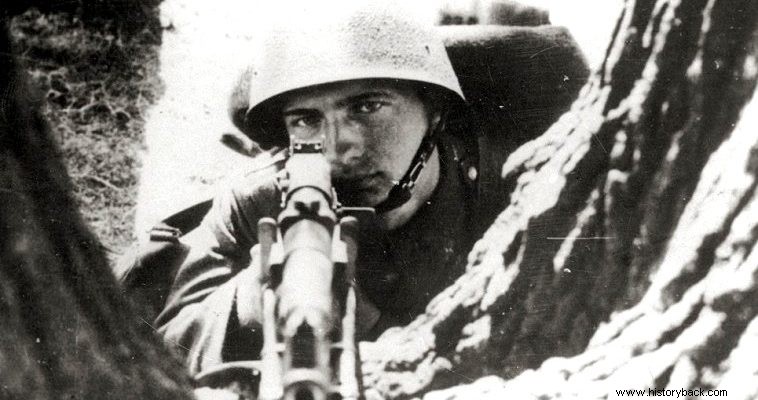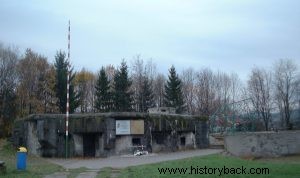
After Czechoslovakia disappeared from the map, the Polish border was also threatened from the South by the Germans and their allies. So in April 1939 the Polish administration decided to create a fortified zone in the area. The plan provided for the construction of 20 small machine guns – patrols (fortification equipped with machine guns and anti-tank guns) in four areas. One of them was from Vegerska Gorka.
In this area, the works started in June 1939. However, by the time of the German invasion only five small forts were ready and of these four were manned. Even in the manned small forts, however, there were deficiencies. All of them, for example, lacked the intended overhead cannons. They also had no generators to supply electricity and consequently no means of communication. There was no water supply and worst of all there was a shortage of ammunition.
The complex of four small forts was manned, in total, by the 70 men of the 151st Fortress Company of captain Tadeus Semik . A border guard battalion under Major Kazimierz Karkowski was deployed defensively outside the fortifications. .
The site was supported by two field artillery and one mountain artillery, along with two platoons of national guards. In total, the Poles had about 1,200 men in the area.
Against this force, the German 7th Infantry Division (MP) under Major General Ott, with a force of 17,000 men, reinforced with heavy artillery, attacked. The Germans were consequently outnumbered 14:1.
The Germans attack
Around 04:30 in the morning of September 1, 1939, the German 7th MP crossed the Polish border. Its mission was to break through the weak Polish defenses in the area and to strike the flank of the Polish Army of Kraków which was supporting its flank at the location of Wegerska Gorka.
The Germans faced fierce resistance from two Polish companies. These brave men, although outnumbered by at least 100:1, managed to hold off the Germans until the afternoon. The Germans finally arrived in front of the Polish defensive position on the morning of September 2 and immediately attacked but were repulsed.
Then Major General Ott ordered the artillery and the air force to crush the "brazen" Poles. Nevertheless, when the German infantry rushed out, after preparation, they were cut down by Polish fire and pinned down. A new attack with armored reinforcements did not work and the Germans lost eight vehicles. However, German pressure in other areas had paid off and the Polish administration of the area ordered the site to be abandoned.
However, her orders did not reach all the defenders in Vegerska Gorka. So only the men of one of the fortifications, companies of the Kharkovsky battalion and the artillery were informed and retreated. However, the one fort that was evacuated was manned by seven infantrymen and joined the fight the next day, although its men only had their individual rifles.
When the Germans attacked again these brave men fought until they ran out of ammunition. Then, unable to escape, they surrendered, but their vile opponents had the luxury of murdering them. In the other three fortifications the fight continued. But without artillery support the position of the Polish defenders became tragic.
Another fort was overrun when the men manning it ran out of ammunition. The next was captured after fierce fighting and only after the Germans hit its flanks with anti-tank guns. The defenders continued to fight desperately with their rifles until they succumbed. The Germans did not bother with the last fortification as the road was now open and began to move towards overwhelming the forces of the Crocovian Army.
The surviving Poles abandoned the fort at night and managed to cross into the friendly lines. The Poles had, however, caused heavy losses to their opponents, having themselves lost around 27 men.

